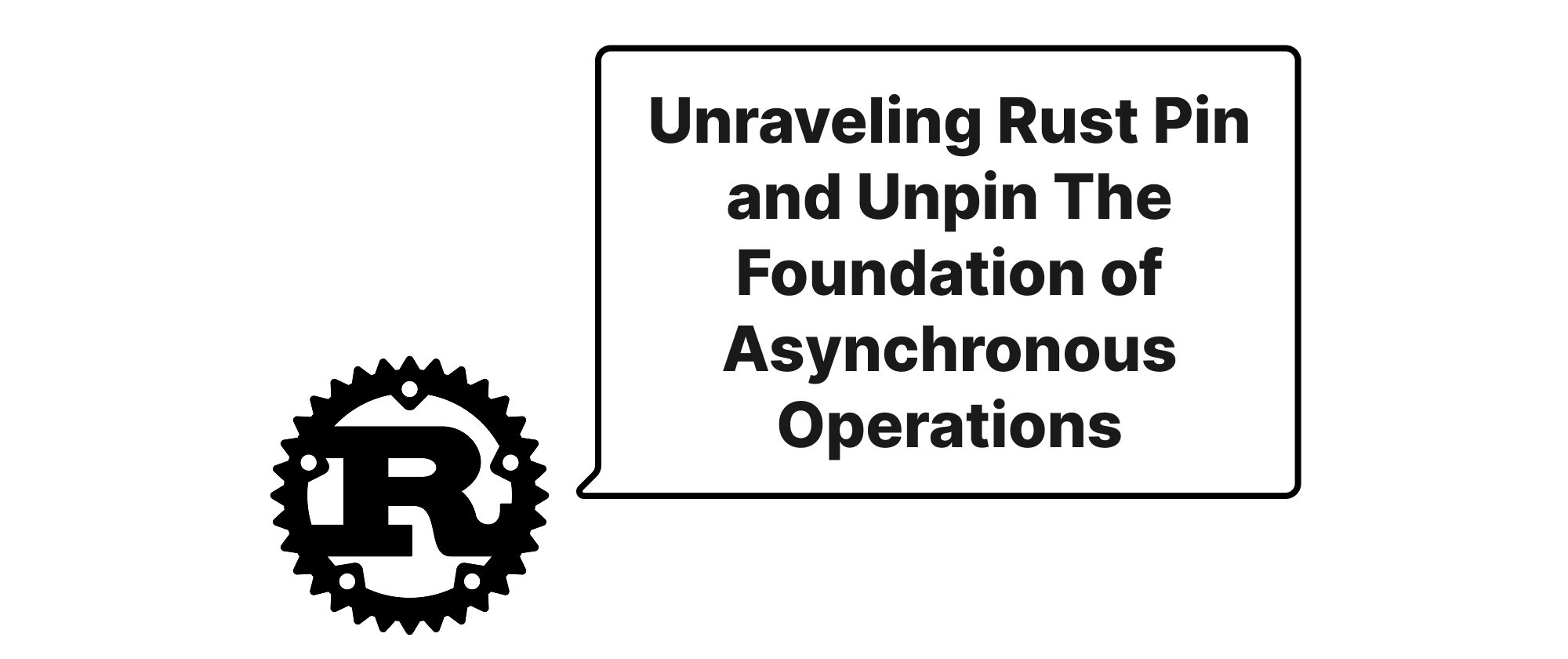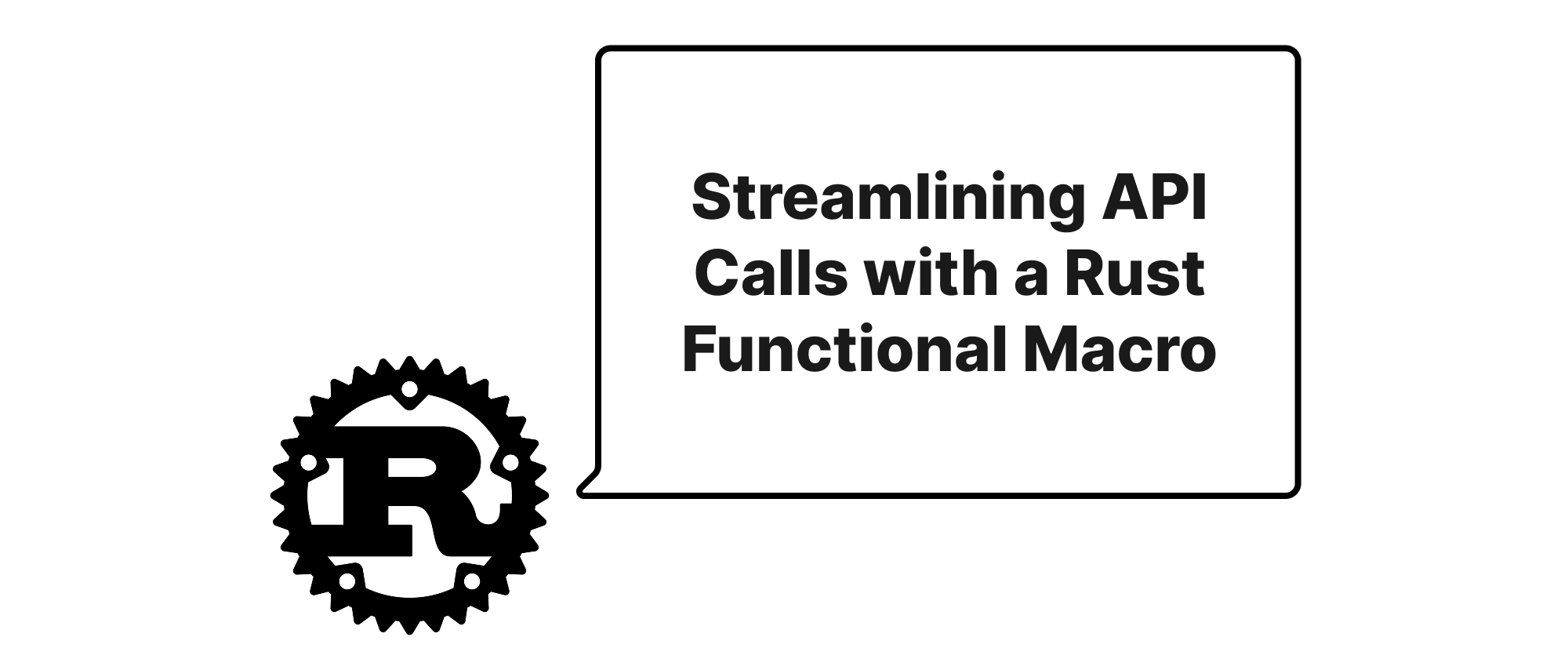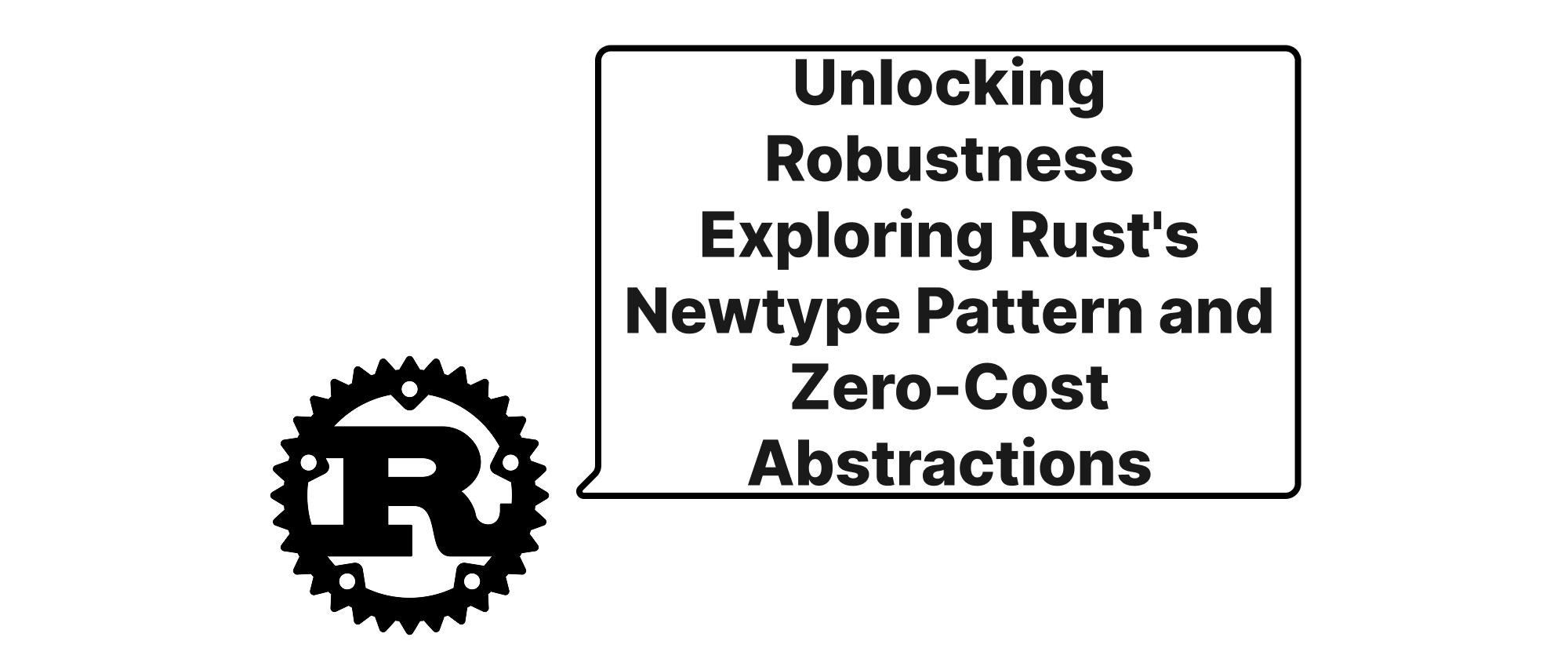Unraveling Rust Pin and Unpin The Foundation of Asynchronous Operations
Olivia Novak
Dev Intern · Leapcell

Introduction
Rust's asynchronous programming model, powered by async/await, has revolutionized how developers write concurrent and non-blocking code. It offers unparalleled performance and memory safety, a hallmark of the Rust language itself. However, behind the elegant await syntax lies a sophisticated mechanism designed to ensure data integrity, particularly when dealing with self-referential structures within Futures. This mechanism is primarily built around the Pin and Unpin traits. Without a proper understanding of these concepts, writing robust and safe asynchronous Rust code can be a significant challenge. This article aims to demystify Pin and Unpin, exploring their purpose, underlying principles, and practical implications for Rust's Futures, ultimately helping you write more effective and safer asynchronous applications.
Deep Dive into Pin and Unpin
Before we delve into the intricacies of Pin and Unpin, let's first clarify some foundational concepts that are crucial for understanding their role.
Essential Terminology
- Future: In Rust, a
Futureis a trait that represents a value that may not yet be available. It's the core abstraction for asynchronous computations. AFutureis "polled" by an executor and, when ready, produces a result. - Self-Referential Structs: These are structs that contain pointers or references to their own data. For example, a struct might have a field that is a reference to another field within the same struct. Such structures are inherently problematic if they can be moved in memory, as moving the struct would invalidate internal pointers, leading to use-after-free errors or memory corruption.
- Move Semantics: In Rust, values are generally moved by default. When a value is moved, its data is copied to a new memory location, and the old location is considered invalid. This ensures ownership safety.
- Dropping: When a value goes out of scope, its destructor (
Droptrait implementation) is called, releasing its resources. - Projecting: This refers to obtaining a reference to a field within a pinned struct. This operation needs to be carefully managed to maintain the invariants enforced by
Pin.
The Problem: Self-Referential Futures and Moving
Consider an async fn in Rust. When compiled, it transforms into a state machine that implements the Future trait. This state machine might need to store references to its own data across await points.
For instance, an async fn might look like this conceptually:
async fn example_future() -> u32 { let mut data = 0; // ... some computation let ptr = &mut data; // This points to `data` inside THIS future's state // ... potentially use `ptr` // await for something, potentially suspending the future some_other_future().await; // ... resume, `ptr` still needs to be valid and point to `data` *ptr += 1; data }
If the Future's state (which contains data and ptr) could be freely moved in memory between await calls, ptr would become a dangling reference. This is a critical memory safety violation that Rust's ownership model rigorously prevents.
The Solution: Pin and Unpin
This is where Pin comes into play. Pin<P> is a wrapper that ensures the pointee (the data pointed to by P) will not be moved out of its current memory location until it is dropped. Pin essentially "pins" the data in place.
Pin<P>: This type expresses the guarantee that the data pointed to byPwill not be moved untilPis dropped. It’s crucial to understand thatPindoes not prevent thePinwrapper itself from being moved. It prevents the pointee from being moved.UnpinTrait: TheUnpintrait is an auto-trait (similar toSendandSync). A typeTautomatically implementsUnpinunless it contains an internal field that makes it "unmovable" or if it explicitly opts out. Most primitive types, collections likeVec, and references areUnpin. If a typeTimplementsUnpin, thenPin<&mut T>and&mut Tbehave almost identically in terms of memory semantics – you can move anUnpinT even if it's behind aPin<&mut T>. This is becausePinonly enforces no-move semantics for data that requires it (i.e., data that does not implementUnpin).
The key lies in the fact that any Future that potentially contains self-referential pointers (like the state machine generated by async fns) does not implement Unpin. This means that such a Future must be kept Pinned in memory to correctly execute.
How Pin Guarantees Safety
- Restricted API:
Pin<P>'s API is designed to prevent accidental unpinning or moving. For example, you cannot get a&mut Tdirectly from aPin<&mut T>ifTis notUnpin. You can only get&TorPin<&mut T::Field>(projection). FutureTrait Requirement: TheFuturetrait itself requiresselfto bePin<&mut Self>in itspollmethod:fn poll(self: Pin<&mut Self>, cx: &mut Context<'_>) -> Poll<Self::Output>;. This ensures that when an executorpolls aFuture, theFuture's state is guaranteed to be stable in memory.Box::pin: A common way to create aPin<&mut T>for a typeTthat doesn't implementUnpinis to useBox::pin(value). This allocatesvalueon the heap, and then guarantees that the heap allocation will not be moved for the lifetime of thePin.
Practical Example: A Self-Referential Future
Let's illustrate with a conceptual, simplified self-referential struct (which async fns internally generate):
use std::future::Future; use std::pin::Pin; use std::task::{Context, Poll}; use std::ptr; // For raw pointer manipulation, typically not used directly in safe Rust // Imagine this struct is generated by an async fn // It holds a data and a reference to that data within itself. struct SelfReferentialFuture<'a> { data: u32, ptr_to_data: *const u32, // Raw pointer for demonstration; `&'a u32` would be lifetime-problematic without Pin _marker: std::marker::PhantomData<&'a ()>, // Marker for lifetime 'a } impl<'a> SelfReferentialFuture<'a> { // This is essentially what an async fn needs to do during its first poll // It initializes the self-reference. fn new(initial_data: u32) -> Pin<Box<SelfReferentialFuture<'a>>> { let mut s = SelfReferentialFuture { data: initial_data, ptr_to_data: ptr::null(), // Initialize to null, will be set later _marker: std::marker::PhantomData, }; // This is safe because Box::pin guarantees `s` will not move from the heap once allocated. let mut boxed = Box::pin(s); // Now, initialize the self-reference. This requires `Pin::get_mut` or similar // if SelfReferentialFuture were Unpin, but since it isn't, we can carefully // cast the Pin to an unsafe &mut to set up the pointer. // In real async fn implementation, the compiler does this safely with internal types. unsafe { let mutable_ref: Pin<&mut Self> = Pin::as_mut(&mut boxed); let raw_ptr: *const u32 = &mutable_ref.get_unchecked_mut().data as *const u32; mutable_ref.get_unchecked_mut().ptr_to_data = raw_ptr; } boxed } } // Any type that needs to be pinned for correctness (e.g., self-referential) MUST NOT implement Unpin. // The compiler automatically ensures `async fn` futures do not implement `Unpin`. // #[forbid(unstable_features)] // This is the effect of compiler magic // impl<'a> Unpin for SelfReferentialFuture<'a> {} // This would be WRONG and unsafe! impl<'a> Future for SelfReferentialFuture<'a> { type Output = u32; fn poll(self: Pin<&mut Self>, cx: &mut Context<'_>) -> Poll<Self::Output> { println!("Polling future..."); // Safety: We are guaranteed `self` is pinned, so `self.data` will not move. // We can safely dereference `ptr_to_data` because it points to `self.data`. // `get_unchecked_mut` is unsafe, but necessary to mutate a pinned value. // In safe code, you'd usually project a `Pin<&mut T>` to `Pin<&mut T::Field>`. let current_data = unsafe { let self_mut = self.get_unchecked_mut(); // Verify our assumption: the pointer still points to our data assert_eq!(self_mut.ptr_to_data, &self_mut.data as *const u32); *self_mut.ptr_to_data }; if current_data < 5 { println!("Current data: {}, incrementing...", current_data); unsafe { let self_mut = self.get_unchecked_mut(); self_mut.data += 1; } cx.waker().wake_by_ref(); // Wake up the executor to poll us again Poll::Pending } else { println!("Data reached 5. Future complete."); Poll::Ready(current_data) } } } // A simple executor for demonstration fn block_on<F: Future>(f: F) -> F::Output { let mut f = Box::pin(f); let waker = futures::task::noop_waker(); // A simple "do-nothing" waker let mut cx = Context::from_waker(&waker); loop { match f.as_mut().poll(&mut cx) { Poll::Ready(val) => return val, Poll::Pending => { // In a real executor, we'd wait for a wake signal // For this example, we just loop until ready std::thread::yield_now(); // Be nice to other threads } } } } fn main() { let my_future = SelfReferentialFuture::new(0); let result = block_on(my_future); println!("Future finished with result: {}", result); // This also demonstrates a conceptual async fn: async fn increment_to_five() -> u32 { let mut x = 0; loop { if x >= 5 { return x; } println!("Async fn: x = {}, waiting...", x); x += 1; // Imagine an actual async operation here tokio::time::sleep(std::time::Duration::from_millis(10)).await; } } // `block_on` can take any `Future`. `async fn`s return an anonymous future type. let result_async_fn = block_on(increment_to_five()); println!("Async fn finished with result: {}", result_async_fn); }
In the SelfReferentialFuture example:
SelfReferentialFuture::newcreates the struct on the heap usingBox::pin. This first step is crucial because it ensures the allocated memory forSelfReferentialFuturewon't move.- Then, it initializes
ptr_to_datato point todatawithin that same heap allocation. - The
pollmethod receivesself: Pin<&mut Self>. ThisPinguarantee means we can safely assumedatahas not moved sinceptr_to_datawas set, allowing us to safely dereferenceptr_to_data.
The async fn increment_to_five() internally compiles to a very similar state machine that manages its x variable and potentially self-references if it had them (e.g., if it took a reference to x inside the loop). The key is the compiler ensures this generated state machine Future type does not implement Unpin, thus requiring it to be Pinned by the executor (block_on here) for safe execution.
Pin::project and #[pin_project]
While directly manipulating raw pointers with get_unchecked_mut is generally unsafe, a common and safer way to manage fields within a pinned struct is through "projection". If you have a Pin<&mut Struct>, and Struct has a field field, you can typically get a Pin<&mut StructField> for an Unpin field, or a Pin<&mut StructField> for a not Unpin field.
For complex self-referential types, creating these projections manually can be tedious and error-prone. The #[pin_project] attribute from the pin-project crate greatly simplifies this. It automatically generates the necessary Pin projection methods, ensuring correctness and safety without requiring manual unsafe code.
// Example using pin_project (conceptual, not runnable without the crate) // #[pin_project::pin_project] struct MyFutureStruct { #[pin] // This field needs to be pinned too inner_future: SomeOtherFuture, data: u32, // potentially more fields } // impl Future for MyFutureStruct { // type Output = (); // fn poll(self: Pin<&mut Self>, cx: &mut Context<'_>) -> Poll<Self::Output> { // let mut this = self.project(); // `this` will have `Pin<&mut SomeOtherFuture>` for inner_future // this.inner_future.poll(cx); // Polls the pinned inner future // // ... access `this.data` which is &mut u32 // Poll::Pending // } // }
When is Unpin useful?
When a type T is Unpin, it means it's safe to move it even if it's behind a Pin<&mut T>. Pin<&mut T> then behaves essentially like &mut T. Most types are Unpin. Types that are not Unpin are those that have self-referential fields or other internal invariants that would be broken by moving.
Unpin is an opt-out trait. If your type doesn't have internal pointers that would be invalidated by movement, it should generally be Unpin. The async fn generated state machines are a primary example of types that are not Unpin.
Conclusion
Pin and Unpin are foundational concepts for understanding memory safety in Rust's asynchronous programming model. Pin provides a critical guarantee that data will remain at a fixed memory location, allowing safe construction and manipulation of self-referential structures, which are vital for the internal workings of async/await state machines. By preventing the accidental movement of such data, Pin ensures that internal pointers remain valid, preventing common classes of memory errors. Understanding these traits moves you beyond merely using async/await to truly comprehending the robust and secure underpinnings of Rust's concurrent future. Mastering Pin and Unpin is key to confidently navigating Rust’s asynchronous landscape and building high-performance, fault-tolerant applications.


